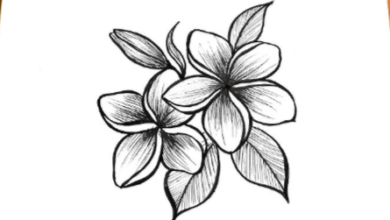Learning Through Art: Flow of Genetic Information Through the Cell

The intersection of Learning Through Art: Flow of Genetic Information Through the Cell for exploring the flow of genetic information within the cell. By utilizing artistic techniques, complex biological processes such as DNA replication and transcription can be rendered into comprehensible visual narratives. This approach not only aids in demystifying the intricacies of cellular mechanisms but also enhances engagement and retention of information. As we consider the potential benefits of integrating creative methods into scientific learning, one must ponder how these visual interpretations can reshape our understanding of genetics and its implications for the future of biotechnology.
The Role of Art in Science
Integrating Learning Through Art: Flow of Genetic Information Through the Cell into the realm of science fosters a unique synergy that enhances understanding and communication of complex concepts.
Artistic expression serves as a powerful tool for scientific communication, allowing intricate ideas to be portrayed visually.
This multidisciplinary approach not only captivates diverse audiences but also encourages creative thinking, bridging gaps between scientific knowledge and public engagement.
Read More Girl: Tptjpeadm7u = Cute: _Qkxbud9x7i = Body Drawing
Ultimately, it promotes a deeper appreciation for both fields.
Overview of Genetic Information Flow
The flow of genetic information through the cell is a fundamental process that dictates the functioning of all living organisms. It encompasses DNA replication, enabling the accurate transmission of the genetic code.
Following this, the transcription process occurs, converting DNA into messenger RNA.

Artistic Techniques for Visualization
Often, scientists and educators employ various Learning Through Art: Flow of Genetic Information Through the Cell techniques to visualize the complex processes involved in the flow of genetic information.
Utilizing visual metaphors and artistic diagrams, they create compelling representations that elucidate intricate cellular mechanisms.
These techniques not only enhance comprehension but also foster a deeper appreciation for the dynamic interplay of genetic elements, empowering learners to explore and understand life at the molecular level.
Benefits of Creative Learning Methods
Creative learning methods offer numerous advantages, particularly in fostering engagement and enhancing retention of complex concepts.
By promoting Learning Through Art: Flow of Genetic Information Through the Cell engagement, these techniques encourage students to actively participate in their learning journey.
Imaginative expression allows individuals to explore ideas in innovative ways, deepening understanding and inspiring curiosity.
Read More Historical Perspectives in Art: From Prehistory to the Gothic Period
Ultimately, such methods cultivate a dynamic learning environment that empowers learners to think critically and creatively.
Conclusion
In conclusion, the integration of Learning Through Art: Flow of Genetic Information Through the Cell into the study of genetic information flow transforms abstract scientific concepts into vivid, comprehensible narratives. Much like a conductor orchestrating a symphony, art harmonizes the complex interactions of DNA replication, transcription, and translation, enabling learners to grasp these processes with greater clarity. This creative approach not only nurtures curiosity but also fosters a deeper appreciation for the intricacies of cellular functions, ultimately bridging the gap between science and understanding in genetics and biotechnology.






